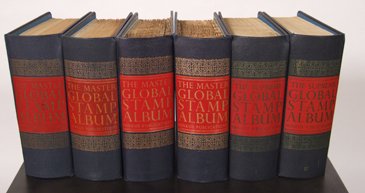Selling Your Stamps

A collection of unused stamps in general is more valuable than a collection of used stamps.
A neatly mounted collection is usually more valuable than a collection of loose stamps.
A collection of one country is usually more valuable than a collection of many countries.
The best way to determine if a collection has any value is if you know that the person who put the collection together spent money acquiring stamps.
The best way to find out if the collection has any value is to show the collection to a stamp dealer. There may be one near where you live. If not, there are stamps shows held all over the country where you can show the collection to several dealers.
You can get information about the value of your stamps from the Scott Postage Stamp Catalog. It is available in most libraries. An old edition can be purchased for a few dollars, but that would have to be done locally, as shipping would be expensive. Year to year changes are not usually great.
The vast majority of unused U.S. stamps issued since 1936 have no premium value. Sales usually take place in relation to the face value.
There are three factors to consider to evaluate first day covers. First is the date the stamp was issued.
Second to consider is the cachet. Collectors pretty much demand covers that have a cachet unless they are pre 1930. A cachet is a printed design related to the stamp. Some cachets are worth more than others. You will need a book such as the U. S. First Day Cover Catalog and Checklist. This will identify the various cachet makers and give you some idea of relative value. You are not likely to find this in a library.
The third aspect is whether there is an address on the cover. Collectors have an overwhelming preference for covers with no address.
Gold stamps are not sought by most collectors. They are not stamps, but rather curiosities created to market to casual collectors. They are cardboard with a gold foil covering. There is no appreciable amount of gold. They were advertised in mass market publications where the seller paid to reach thousands of readers. If there was much interest among established collectors, they would have been marketed in philatelic publications. The tremendous difference in marketing cost is passed to the buyer in high prices.
The best place to sell them is outside the primary philatelic market, in a place like eBay. On eBay you could expect to receive between 20¢ and $1.00 per item. The best way to maximize your price is to include many, many photos.
